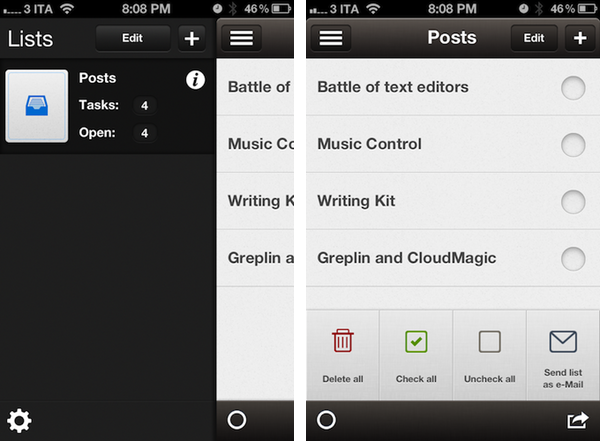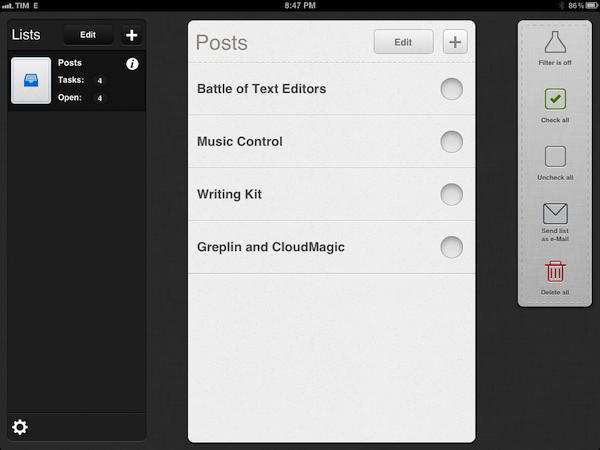When I reviewed the first, iPhone-only version of ListBook from noidentity last year, I called it “a good alternative to Apple’s Notes app for most iPhone users”. In the past 12 months, however, Apple shipped iOS 5, a major revision of its mobile operating system that, among other things, includes a native list-making app called Reminders. The writing was on the wall for developers of third-party list apps: Apple likes to “borrow” ideas from successful applications every once in a while, and simple todo lists are just something too common to ignore for a possible system integration. As usual after Apple comes out with its own take on a previously third party-only idea, many rush to declare Product X has been “sherlocked” by Apple. It happens every time. The opposite is quite true: Apple’s take on such ideas and workflows often creates an even bigger market for developers, raising the public’s awareness on a particular kind of software, leading more people to seek out alternatives and different takes from other developers.
The new ListBook, released today, falls exactly under this category. With a simple interface, lists, and iCloud sync, one could easily think it’s a Reminders clone with a price tag on top of it (the app is sold at $1.99 on the App Store). As I mentioned above, those looking for a different take on Reminders – which will also gain a desktop counterpart on Mountain Lion – will be pleased to find in ListBook some clever features implemented in a way that makes switching between the iPhone and iPad version as effortless as iCloud allows.
ListBook makes lists. On the iPhone, these lists are accessible from a button in the top left corner that you might have seen elsewhere recently; on the iPad, the app uses a split interface that’s quite attractive and works fine.
Lists can be assigned an icon (the selection is nice), and you can disable Home screen badges on a list basis. Each list shows how many items you entered in total (tasks) and how many of them haven’t been completed (open). Because ListBook isn’t strictly GTD, but wants to combine text-based lists with a simple todo management system, completed items will stay in a list until you delete them permanently – a Filter button lets you view only “open tasks” if you prefer such view. This view setting, alongside lists and todos, will sync across devices using iCloud, and in my tests sync has been fairly responsive – it takes only a few seconds to see new items appear on another device, even if the app is already in the foreground.
Overall, I think ListBook 3.0 is a great update and the right path to follow for the developers, especially with iCloud, which would open the door to a possible Mac app in the future. If you like well-crafted user interfaces (the icon is also very polished and not blue or red), a simpler approach to list creation and supporting indie developers, you should give ListBook a try – it’s $1.99 on the App Store. For people who are just looking for a basic todo list app that syncs across devices, however, hitting the Buy button on this one might be a little hard. Apple’s Reminders does more, is integrated with Macs and PCs, and it’s free. Those users will be more than fine using Reminders, and I don’t blame them – Apple’s utility covers various aspects of list management very well, it’s got Siri support, and will gain a desktop version this summer. If, for some reason, you don’t like Reminders, or are simply intrigued by third-party apps in general, you should still try the new ListBook – it’s very nice and gets the job done.



